Building of the Day: 288 Jackson Avenue
Brooklyn, one building at a time Address: 288 Jackson Avenue Cross Streets: Kingsland, Maspeth and Debevoise Avenue Neighborhood: East Williamsburg Year Built: 1912-1914 Architectural Style: Northern Italian Renaissance Revival Architect: Frank J. Helmle Other Buildings by Architect: Bossert Hotel, St. Barbara’s Catholic Church, St. Gregory the Great Catholic Church, Prospect Park Boathouse, Greenpoint Savings Bank,…


Brooklyn, one building at a time
Address: 288 Jackson Avenue
Cross Streets: Kingsland, Maspeth and Debevoise Avenue
Neighborhood: East Williamsburg
Year Built: 1912-1914
Architectural Style: Northern Italian Renaissance Revival
Architect: Frank J. Helmle
Other Buildings by Architect: Bossert Hotel, St. Barbara’s Catholic Church, St. Gregory the Great Catholic Church, Prospect Park Boathouse, Greenpoint Savings Bank, Williamsburg Trust Bank, and many other buildings.
Landmarked: No, unfortunately
The story: As the population of a neighborhood or city grows, the need for more hospitals and medical care facilities also grow. By the end of the first decade of the 20th century, the population of Williamsburg, Bushwick and Greenpoint had swelled to enormous proportions, and so had the industry in the area. Most of the people who most needed these facilities could not afford medical care or private hospitals, so the city’s Department of Public Charities decided to erect a new public hospital in the middle of these neighborhoods.
They hired Frank J. Helmle, a prominent Brooklyn architect who had great experience in designing public buildings. In 1902, Helmle had been appointed Superintendent of Public Buildings in Brooklyn, a position that allowed him to build many of the borough’s park shelters, the Prospect Park Boathouse and Tennis House, along with the Fire Communications Building on the edge of Empire Boulevard, firehouses and other buildings. All of Helmle’s buildings for the city are much like this hospital complex; simple clean buildings of light colored brick, with minimal classical detail, and most often with his signature Northern Italian villa-style roofs with large overhanging eaves.
It’s not very often that an architect gets to design an entire hospital complex. Many times, a main hospital building is constructed, and later, more buildings are added as needed, or as land allows. Very often that is years later, and different architects add their talents to the campus. Some design contextually, others don’t. Here, Helmle was able to design the whole complex, which adds to the specialness of this hospital, and the beauty and majesty of the whole.
Helmle was quite proud of his design, as well as the existence of the hospital itself, and told the Brooklyn Eagle: “The greatest attention given to public health nowadays is probably the most conspicuous evidence of our advancing civilization…Here in a comprehensive group of buildings is to be provided with every possible facility that modern science, mechanical skill, engineering genius and architectural ability can devise for the treatment and accommodations for the sick.”
But, in spite of the positive accolades for the design and the hospital itself, there were many delays in the building and the implementation of the plans to run the hospital, and it didn’t actually open until almost a year after the buildings were completed. Greenpoint Hospital opened its doors to the public with much pomp and circumstance on October 4, 1915.
Although the hospital probably had more uneventful years and periods than those that made the news, the hospital only lasted about 70 years. I’ll write at another time about some of the events and people that passed through its doors. It is most famous in late 20th century popular lore as the hospital that Frank Serpico was taken to when he was shot in the face in 1971, during a drug bust. But by the 1980s, the hospital was placed on the chopping block, and was closed down when the newer and more easily accessible Woodhull Hospital was completed, around the same time.
The city was closing hospitals right and left back then, and also owned a lot of armories and other large white elephant buildings. Generally, without any notice to or advice from the communities, the city began opening homeless shelters in them, trying desperately to house a growing homeless population. The main building of the hospital was turned into a huge homeless shelter, at one point housing over 1200 people. The homeless were given beds for the night, but turned out into the community in the morning, with no programs to help them with medical, addiction or mental health needs, or any kind of job training or programs to help them get back into society.
The community fought hard to have some say in the future of the complex, and in 1984, the Greenpoint Renaissance Enterprise Corporation (GREC) was founded; a consortium of six neighborhood non-profits and community groups. GREC put together a comprehensive plan for the large campus, which included a much smaller homeless shelter, but also senior housing, low income housing and other housing and community programs. The story of that struggle is also a tale for another time. Let’s just say the city was not very cooperative, and had to be forced in court, several times, to uphold its end of the deal.
Today, Greenpoint Hospital is a combination of housing, an outpatient medical facility, homeless shelter, and two large empty and abandoned buildings, one of which was originally nurses housing. The main hospital building seems to be grossly underutilized. The renovated part of the campus is beautiful, but just across the way are those two buildings that need to be renovated and put back into use before too much water damage makes that highly unlikely.
The windows are mostly gone, graffiti covers the walls, and the elements, birds and other animals will continue to destroy them, if nothing is done. Hospital buildings repurpose well into housing, and this could be one of the most beautiful housing complexes in this part of Brooklyn. Hopefully GREC will be able to do this before it’s too late. There certainly is room here to take care of social responsibility, and perhaps even open parts up to more housing and other uses. Frank Helmle’s vision of a responsible and advanced society could still come true here.
(Photograph: S.Spellen)
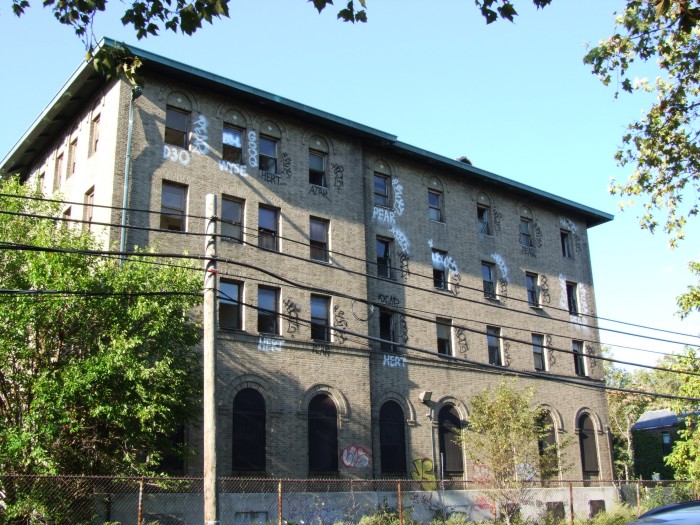





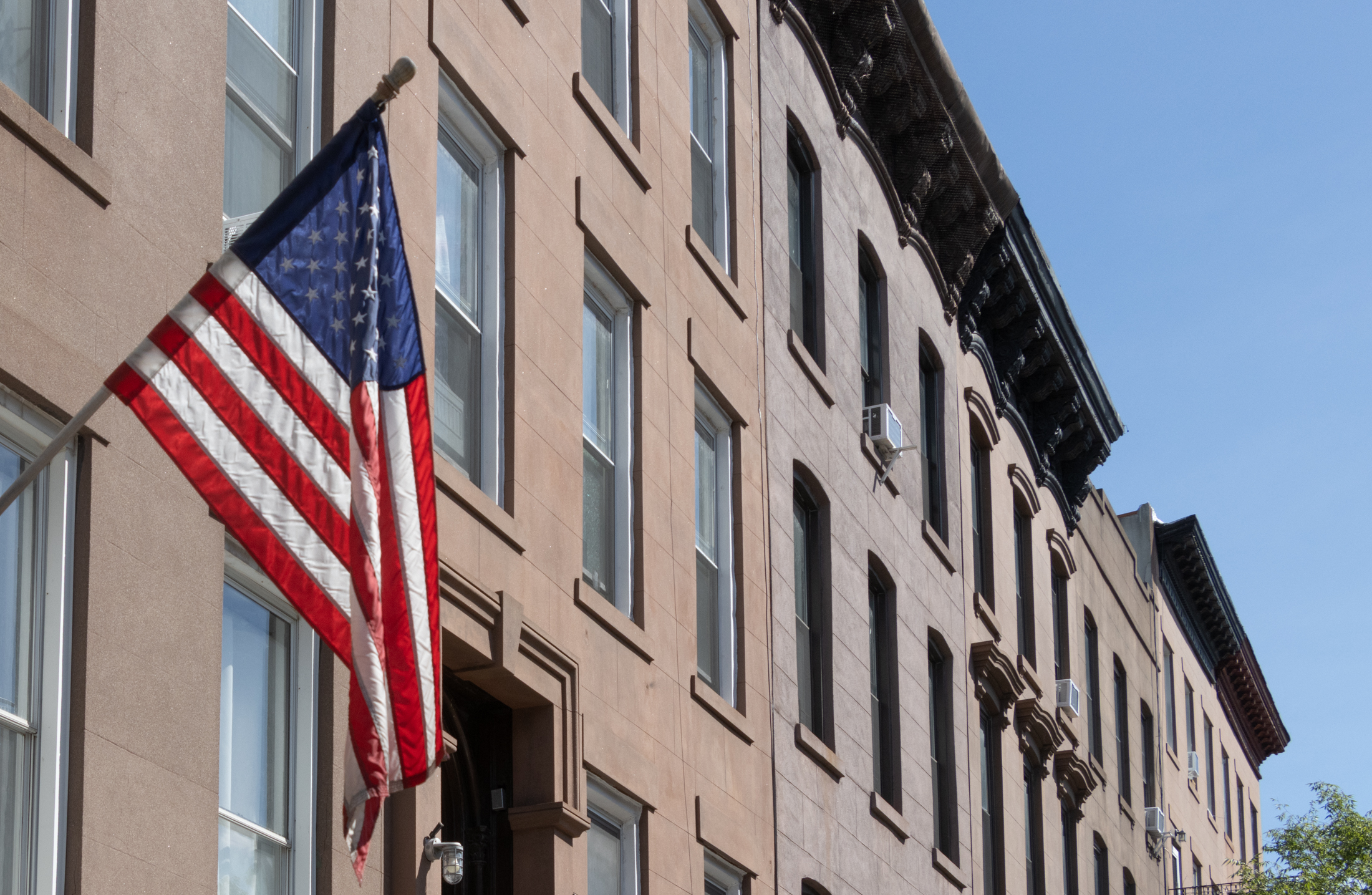
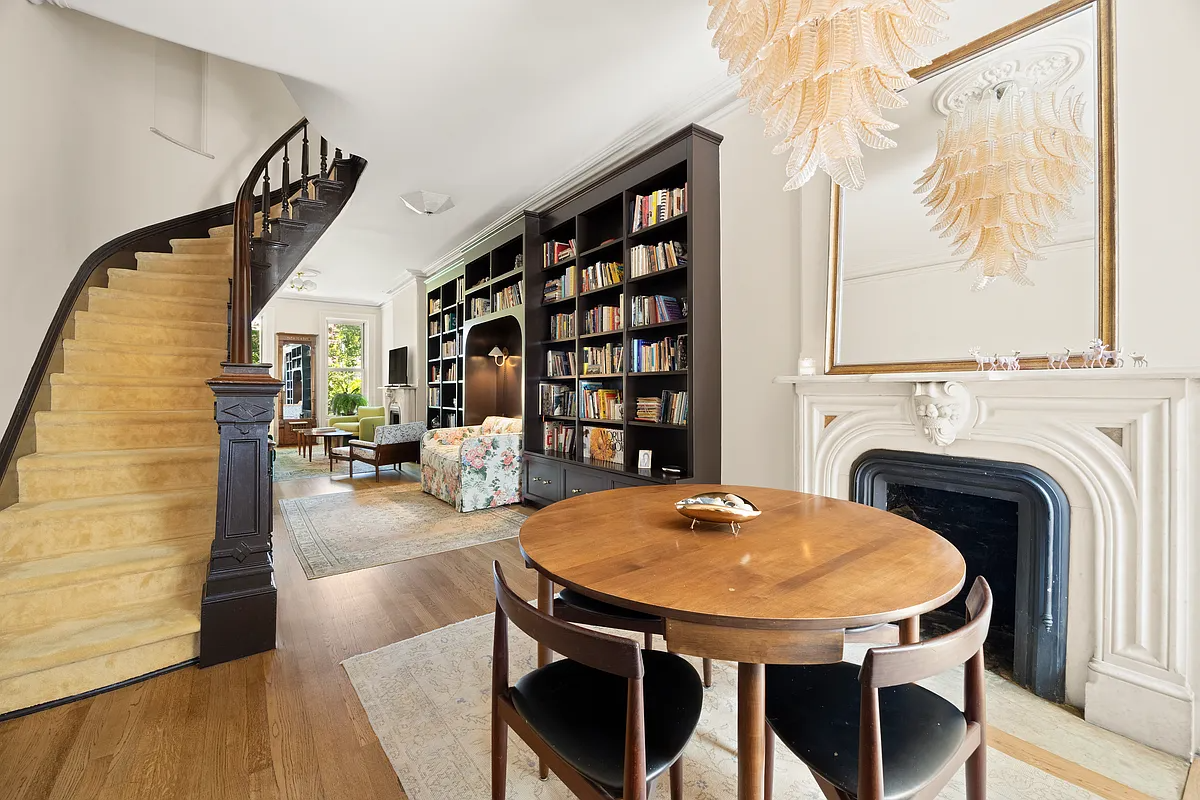
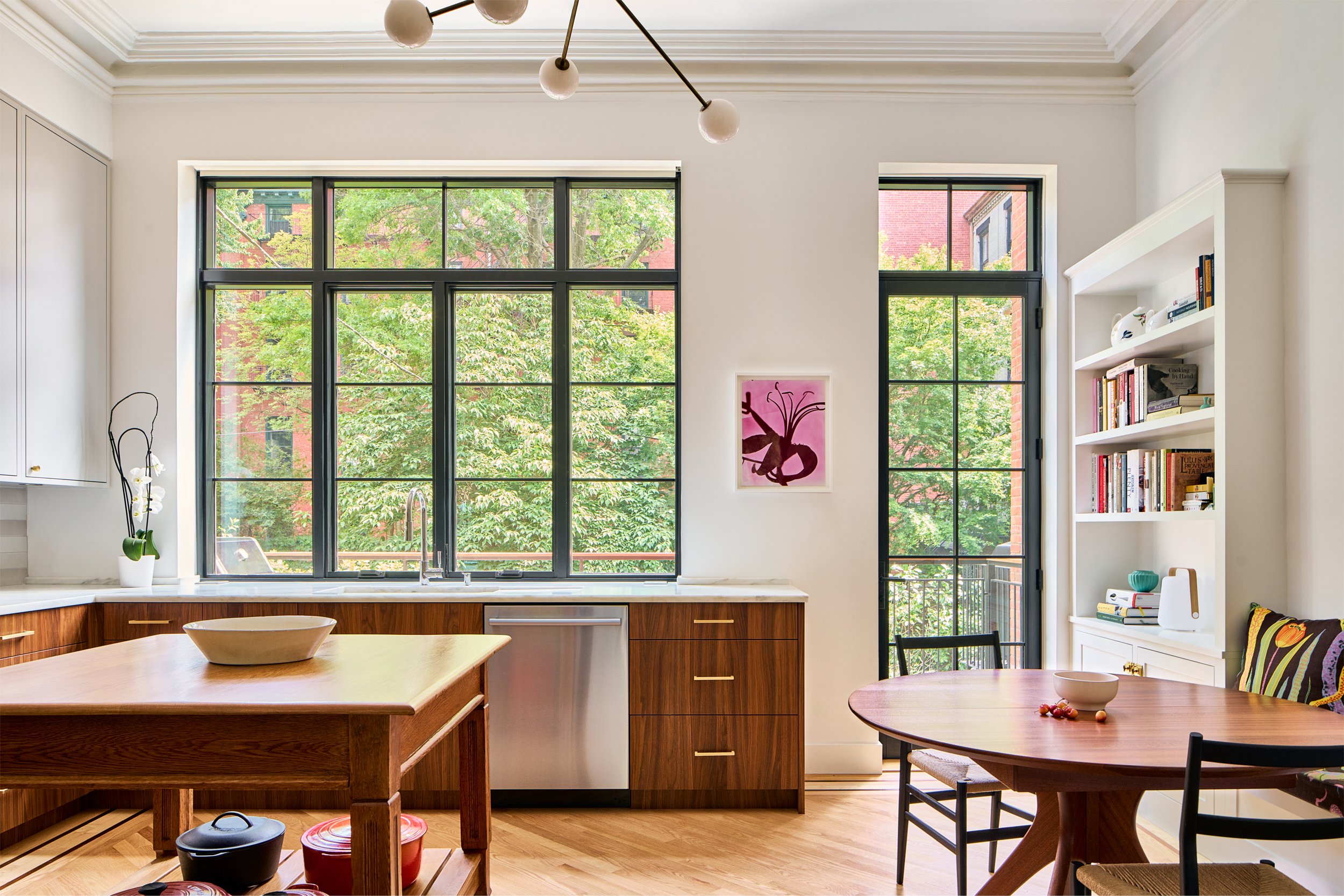
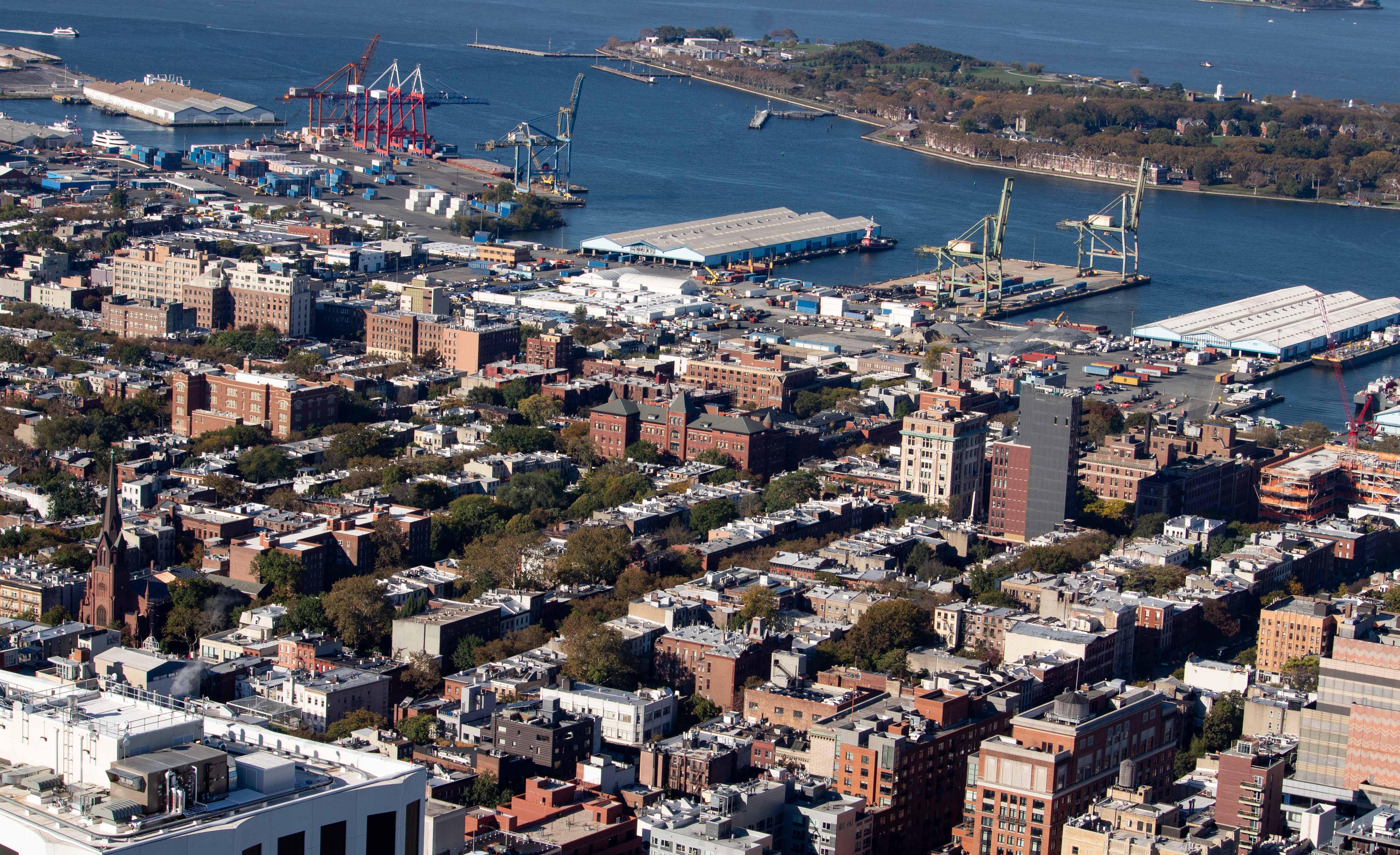
What's Your Take? Leave a Comment